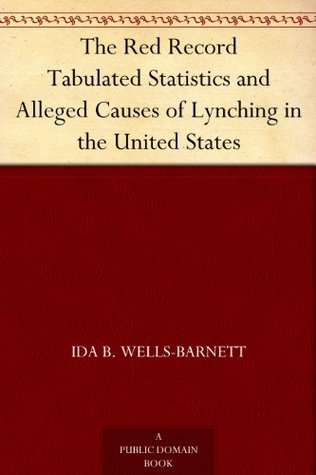What do you think?
Rate this book


113 pages, Kindle Edition
First published January 1, 1895
At three o'clock the mob rushed to the jail to secure the prisoner. Mr. Ray had changed his mind about the promised burning; he was still in doubt as to the prisoner's guilt. He again addressed the crowd to that effect, urging them not to burn Miller, and the mob heeded him so far, that they compromised on hanging instead of burning, which was agreed to by Mr. Ray. There was a loud yell, and a rush was made for the prisoner. He was stripped naked, his clothing literally torn from his body, and his shirt was tied around his loins. Some one declared the rope was a "white man's death," and a log-chain, nearly a hundred feet in length, weighing over one hundred pounds, was placed round Miller's neck and body, and he was led and dragged through the streets of the village in that condition followed by thousands of people. He fainted from exhaustion several times, but was supported to the platform where they first intended burning him.
The chain was hooked around his neck, a man climbed the telegraph pole and the other end of the chain was passed up to him and made fast to the cross-arm. Others brought a long forked stick which Miller was made to straddle. By this means he was raised several feet from the ground and then let fall. The first fall broke his neck, but he was raised in this way and let fall a second time. Numberless shots were fired into the dangling body, for most of that crowd were heavily armed, and had been drinking all day.
Miller's body hung thus exposed from three to five o'clock, during which time, several photographs of him as he hung dangling at the end of the chain were taken, and his toes and fingers were cut off. His body was taken down, placed on the platform, the torch applied, and in a few moments there was nothing left of C.J. Miller save a few bones and ashes. Thus perished another of the many victims of Lynch Law, but it is the honest and sober belief of many who witnessed the scene that an innocent
man has been barbarously and shockingly put to death in the glare of the nineteenth-century civilization, by those who profess to believe in Christianity, law and order.
"You rape our women, and you're taking over our country."In the aftermath, the mayor claimed to not know much about the treatment of blacks in South Carolina because it was not taught in schools. That prompted people to create a reading list. This was one of the books I noticed from the list.